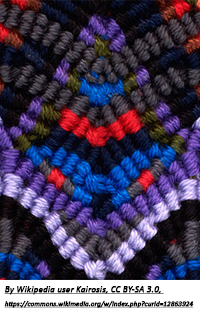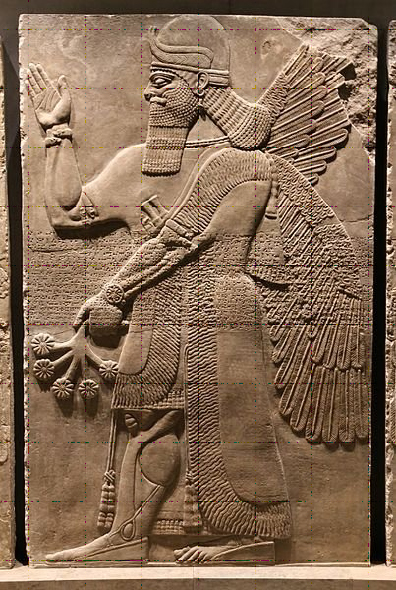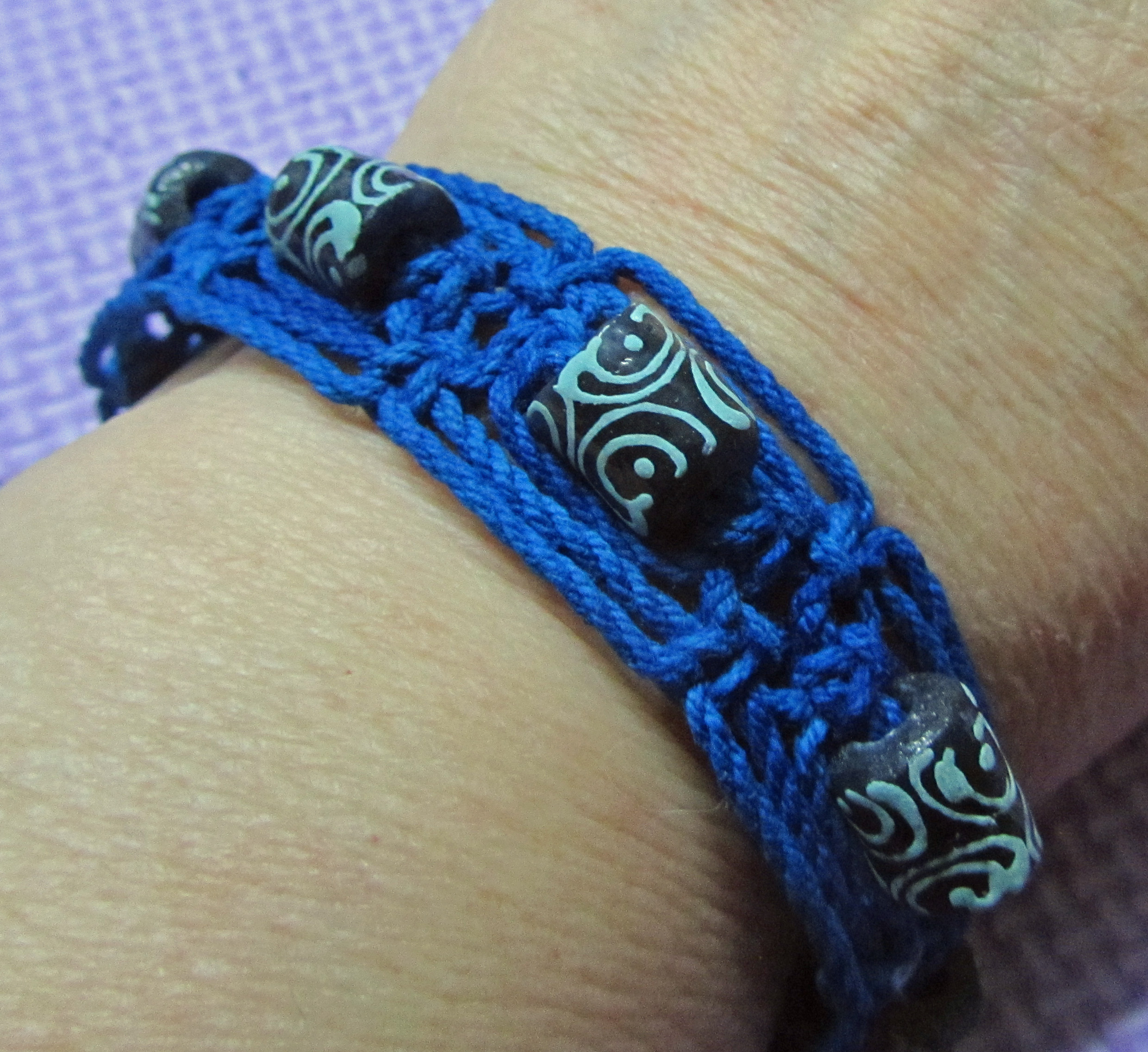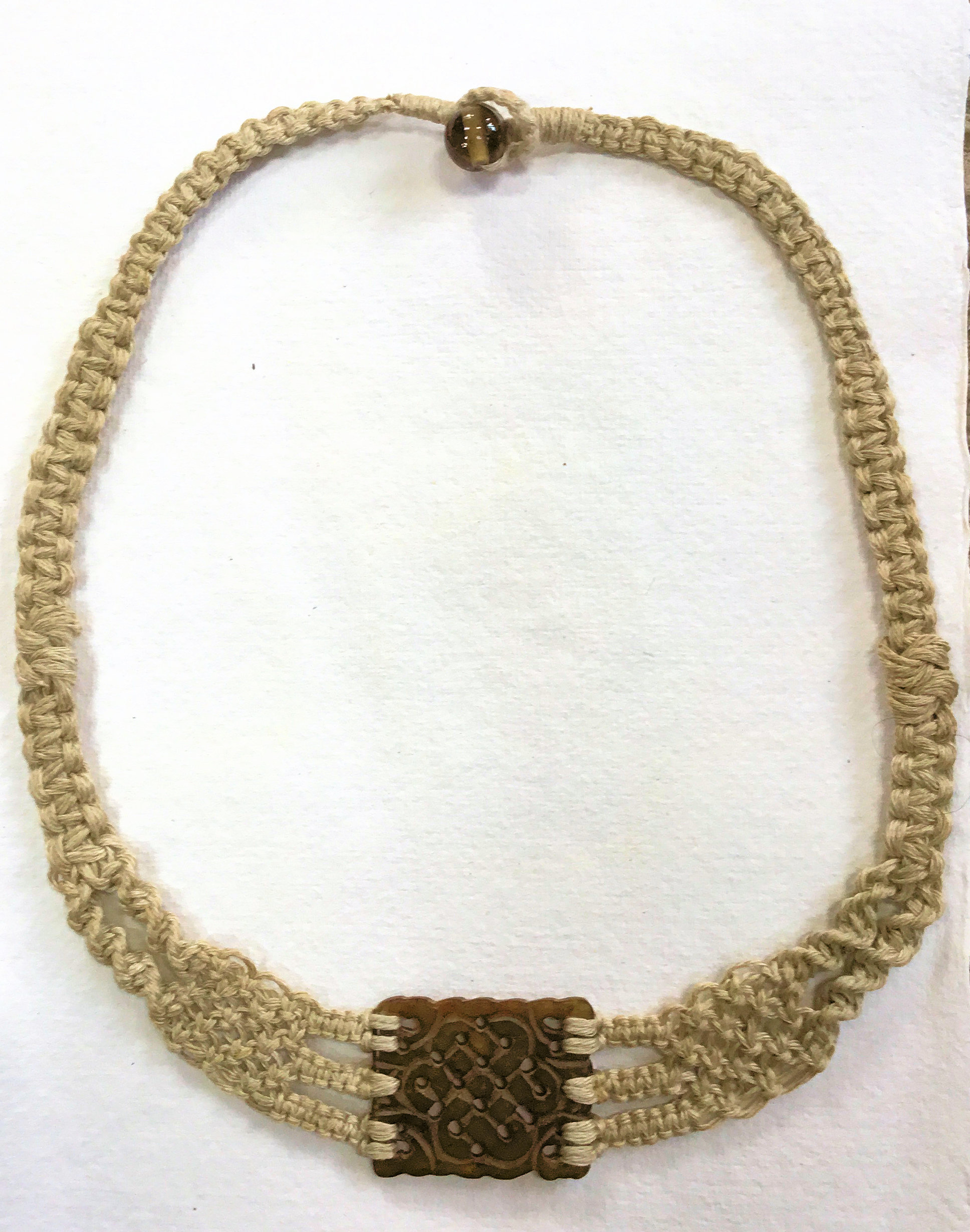Macramé

 The earliest recorded macramé knots appear in decorative carvings of the Babylonians and Assyrians. Macramé was introduced to Europe via Spain during its conquest by the Moors and the word is believed to derive from a 13th-century Arabic weavers term meaning fringe as the knots were used to turn excess yarn into decorative edges to finish handwoven fabrics.
The earliest recorded macramé knots appear in decorative carvings of the Babylonians and Assyrians. Macramé was introduced to Europe via Spain during its conquest by the Moors and the word is believed to derive from a 13th-century Arabic weavers term meaning fringe as the knots were used to turn excess yarn into decorative edges to finish handwoven fabrics.
Probably introduced to England by Queen Mary in the late 17th century it was also practised by sailors who made decorative objects (such as hammocks, belts etc.) whilst at sea thereby disseminating it even further afield when they sold their work in port. It was also known as McNamara’s Lace.
The Victorians loved macramé for “rich trimming” for clothing and household items with a favourite book being “Sylvia’s Book of Macramé Lace” which is still available today. Macramé regained popularity in the 1970’s for all sorts of furnishing items and accessories including jewellery which incorporated beads and other natural elements such as shell, bone and semi-precious stones.
Cavandoli Macramé is an intricate type of knotting using the half hitch knot to create geometric patterns – also called Tapestry Knotting - this knot is one with which tapestry weavers are already familiar (see right).
Dianne Miles used our warp to make some macramé pieces. The general equipment she used comprised of an S – hook for hanging work whilst in progress; foam square to pin work into; T-pins to hold work in place and for shaping; small brass tipped bobbin to adjust knots and help undo mistakes; beads and findings as required; measure; sharp scissors; needle and thread to help with threading yarn through beads and attachments for findings; PVA adhesive.
|
|
Macramé bracelet using cotton seine twine warp 6’s fine with silver-plated findings to provide fastening. Knots used: Lark’s Head knot; Square knot variations; Spiral knot; Wrap knot. Once completed and loose ends dealt with, it was pinned out and adjusted as necessary then brushed with a light coating of diluted PVA onto both sides of the work to fix it in place, add body and prevent slippage. Do this one side at a time and allow to dry before turning over and doing the other side. This should only slightly stiffen the work and is not visible once dry. |
|
|
Macramé bracelet - this is the similar design to the one shown above but made using our dyed warp and with inserted stones for extra decoration. |
|
|
Macramé necklace in progress using undyed linen warp 6s medium with Chinese carved stone pendant and with a glass bead, shown in upper right, which will form part of the fastening mechanism once the necklace is completed. The upper picture shows the necklace being made and below that is a photo of the finished necklace |





